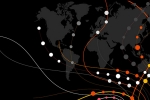
Technology made simple
TechTalk Podcasts

Ah, technology. To quote Steve Jobs, arguably the most famous disruptor of our time, "we have no idea how far it's going to go".
Whether you're the savviest techy around or a complete tech-dummy or somewhere in between, join Carla Santos, a journalist eager to learn more about tech-related matters, and Christopher Rossa, who continuously seeks to demystify technology, during their monthly conversations with specialists from different industries, who share their knowledge on hot topics such as cybersecurity, cloud, and artificial intelligence.
The matters revolve around technology developments and the business challenges linked to them, with interesting reflections on how far we've come and how far we just might go.
TechTalk is technology made simple, over a cup of coffee.

Unplugged and unfiltered: The TechTalk wrap-up
In this special wrap-up episode of TechTalk, Carla Santos, Christopher Rossa and Paul Antunes take a step back to reflect on their podcasting journey. They revisit standout episodes, share key takeaways, and offer a behind-the-scenes look at the making of the podcast. With a touch of humour, this episode marks both a pause before the summer break and a personal farewell, as Carla hosts her final episode.
Listen on: Apple Podcasts Spotify Deezer YouTube

Are we still in charge? Exploring the rise of agentic AI
What are AI agents—and how are they different from Agentic AI? In this episode of TechTalk, we explore how these intelligent systems work, what they can (and can’t) do, and how they’re already changing the way we work.
With guests Mehdi Roussaky, Manager in the Data Analytics and AI team at PwC Luxembourg, and Jordi Cabot, Head of the Software Engineering RDI Unit at the Luxembourg Institute of Science and Technology, we look at real use cases, the opportunities for organisations, and the tough questions around control, trust, and the future of intelligence.
Listen on: Apple Podcasts Spotify Deezer YouTube

Financial services’ road to AI: Where we are and where we’re headed
In this episode of TechTalk, we explore how financial services are steering toward AI — covering emerging regulations like the EU AI Act, trust-building, collaboration, and the shift from experimentation to real-world applications. To guide us through this evolving landscape, we’re joined by Ulf Herbig, Chairman of the EFAMA AI Task Force and Chairman of ALFI’s Digital Finance Working Group on Innovation and Technology; and Sébastien Schmitt, Partner in Regulatory Risk and Compliance at PwC Luxembourg.
Listen on: Apple Podcasts Spotify Deezer YouTube

Be the pilot of your Copilot implementation journey: challenges, governance and success
Getting Microsoft 365 Copilot is just the first step—adopting it at scale is where the real challenge begins. In this episode, Martin Soisson, Senior Manager in the Core Project Unit and AI Competency Lead at PwC Luxembourg, shares how the firm is approaching GenAI adoption, from real-life use cases to key success factors and lessons learned.
Listen on: Apple Podcasts Spotify Deezer YouTube
Season 14

Ep3: The One on bringing AI to work—and keeping cyber threats out
AI and cloud-based tools are transforming the modern workplace, but they also introduce new cybersecurity risks—from AI-powered phishing scams to the complexities of securing third-party AI services.
In this episode of TechTalk, we speak with Vincent Garnier-Salvi, Cybersecurity Senior Manager at PwC Luxembourg, and Aleksandrina Kovacheva, an IT specialist with over nine years of experience in the public and private sectors. Together, we explore the key security risks of AI-driven workplace solutions—and how organisations can protect their data, prevent cyber threats, and navigate evolving regulations.
Listen on: Apple Podcasts Spotify Deezer YouTube

Ep2: The One on the Modern Workplace enabled by GenAI
Generative AI is transforming the way we work, from boosting productivity to automating tasks, reshaping collaboration, and enhancing decision-making. But finding the right balance between human intelligence and AI capabilities remains an ongoing challenge, alongside governance and integration.
In this episode of TechTalk, Xavier Lisoir, Managing Director in Digital Transformation at PwC Luxembourg, and Davy De Roeck, Senior Technical Specialist in Business Applications and Low-Code at Microsoft Benelux, share their insights on harnessing GenAI’s full potential in the workplace.
Listen on: Apple Podcasts Spotify Deezer YouTube

Ep1: The One on the Modern Workplace: an Introduction
Tired of digital document chaos? As the digital era reshapes the way we work, modern workplace solutions can simplify document management and collaboration, saving time and boosting productivity.
In the first episode of our new season, we discuss with Quentin Lallement, Senior Manager in the Modern Workplace & Microsoft team at PwC Luxembourg, and Billy Glodt, Deputy Head of the Business Unit IT Production at Spuerkeess, about the opportunities and challenges of implementing modern workplace solutions and how to make the most of them.
Listen on: Apple Podcasts Spotify Deezer YouTube
Special Episode

The One on the Investment Tax Credit to accelerate Digital Transformation
In January 2024, the Luxembourg government introduced a new investment tax credit to accelerate digital, ecological, and energy transformations for businesses. This initiative goes beyond a financial incentive; it’s a strategic move to drive digital transformation across industries.
In this special episode of TechTalk, Julie Martin, Senior Manager in Digital Transformation and User Experience Team Leader at PwC Luxembourg, and Davide Visin, Managing Director in Corporate Tax at PwC Luxembourg, offer valuable insights into the new tax regime, its potential impact on businesses, and Luxembourg’s vision for a digitally advanced future.
Listen on: Apple Podcasts Spotify Deezer YouTube
Season 13

Ep3: The One on Citizen Experience in Luxembourg
In this episode of TechTalk, we explore citizen experience from two perspectives. Marion Massot, Senior UX Designer at PwC Luxembourg’s Experience Center, explains what citizen experience entails and why it’s essential for Luxembourg’s future. Meanwhile, Björn Rohles, Training Manager in User Experience at the Digital Learning Hub Luxembourg, reveals how UX training and a human-centred approach at the Digital Learning Hub are bridging the digital skills gap and empowering citizens.
Together, they discuss the challenges, opportunities, and transformative potential of public services in the digital age.
Listen on: Apple Podcasts Spotify Deezer YouTube

Ep2: The One on simplifying Public Services with the Once-Only Principle
Tired of filling out endless online forms or submitting the same documents across different public entities? Well, whether you’re starting a business, moving, registering a vehicle, studying, or working abroad, these processes could be much simpler thanks to the Once-Only Principle.
In this episode of TechTalk, we dive into this topic with Jacques-Félix Wirtz, Director in Government and Public Sector, and Xavier Lisoir, Managing Director in Digital Transformation, at PwC Luxembourg. Together, we explore the opportunities and challenges of implementing the Once-Only Principle, its role in digital transformation, and its impact on the future of Luxembourg’s public administration.
Listen on: Apple Podcasts Spotify Deezer YouTube

Ep1: The One on GenAI in Luxembourg’s Public Sector
In the first episode of our new TechTalk season, which focuses on the public sector, we discuss how generative AI (GenAI) is being applied in Luxembourg, its current and future uses, the challenges and opportunities ahead, and what this means for the workforce of tomorrow.
Our guests are Inès Baer, Head of Data, Statistics, and Labour Market Studies at ADEM, Luxembourg’s National Employment Agency, and David Bernard, Manager in Industry & Public Sector Advisory at PwC Luxembourg.
Listen on: Apple Podcasts Spotify DeezerYouTube
Special Episode

The One on Managing Data Successfully
In this special episode of TechTalk, we speak with Bernard de Villepin, Manager in the Data Strategy & Data Management team at PwC Luxembourg, about the critical role of data in modern organisations. We discuss the challenges of achieving a data-driven environment, emphasising the need for clean, high-quality data, strong data governance, and effective data management.
Bernard also shares insights on the impact of emerging technologies like AI and machine learning, and the importance of fostering data literacy to ensure all employees can understand and use data responsibly.
Listen on: Apple Podcasts Spotify Deezer YouTube
Season 12

Ep3: The One on the future of Payroll technology
Accurate and timely payroll processes, along with flawless payroll management, are crucial for a positive payroll experience. This, in turn, enhances employee trust in the business, job satisfaction, and engagement.
In this episode of TechTalk’s HR Tech season, we delve into the challenges payroll professionals are facing and how technology can help them with our guests Jo Kippers, Director at EPI-USE, and Emeline Barbenchon, Director in the People, Experience & Change department at PwC Luxembourg.
Listen on: Apple Podcasts Spotify DeezerYouTube

Ep2: The One on Human Resources Analytics
Human Resources (HR) Analytics empowers organisations to make data-driven decisions that can greatly improve their HR functions, from recruitment and retention to employee engagement and performance.
In this episode of TechTalk, we delve into HR Analytics with our guests George Giannoulis, European Expert in HR IT Systems and HR Data Management at FANUC Europe, and Niklas Johansson, Manager in the People, Experience & Change team at PwC Luxembourg.
Listen on: Apple Podcasts Spotify DeezerYouTube

Ep1: The One on Employee Engagement
In the first episode of TechTalk's Human Resources Technology season, we shine a light on employee engagement and how organisations are using technology to enhance it.
Our guests are Deborah Kuness, Principle Business Psychologist at Workday Peakon Employee Voice, and Emeline Barbenchon, Director in the People, Experience & Change department at PwC Luxembourg.
Listen on: Apple Podcasts Spotify DeezerYouTube
Season 11
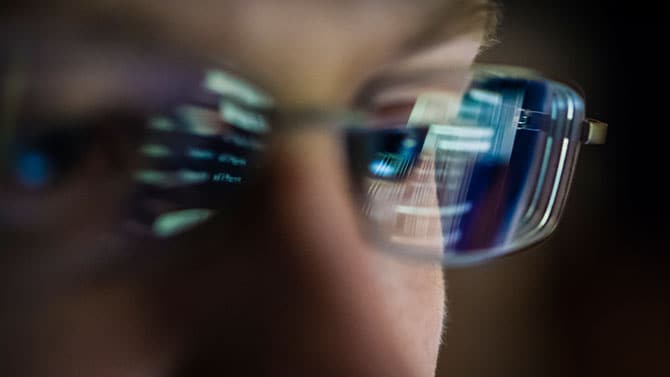
Ep2: The One on Navigating the EU Data & AI Regulations
In this episode of TechTalk, we explore how organisations are gearing up for the Data Act and the Artificial Intelligence (AI) Act, which are part of the European Union’s Digital Strategy and set clear guidelines for fair data access and ethical AI use across the Union.
More precisely, we discuss the operational shifts required, the potential hurdles in compliance, and the strategies to overcome them, among others. Our guests are Dr. Jan-Peter Ohrtmann, Partner at PwC Legal Germany and the Global Privacy & Cyber Legal Network Lead, and Dr. Saharnaz Dilmaghani, Artificial Intelligence & Data Science Senior Associate at PwC Luxembourg.
Listen on: Apple Podcasts Spotify Deezer YouTube
Special Episode

The One on Empowering Women in Tech
To mark International Women’s Day, we invited two remarkable women who, as members of Girls in Tech Luxembourg, are helping other women to shape their voice in the typically male-dominated tech field: Vasiliki Moschou, IT Business Analyst at Arcelor Mittal & Co-Managing Director of Girls in Tech Luxembourg, and Yoliana Bayona, Director in Technology Advisory at PwC Luxembourg and Business Development & Partnerships Manager in Girls in Tech Luxembourg.
In this episode, Vasiliki and Yoliana share their journeys in the tech industry, the challenges and opportunities they've faced as women in tech, and the mission and impact of Girls in Tech Luxembourg.
Listen on: Apple Podcasts Spotify Deezer YouTube

Ep1: The One on how Service Providers are gearing up for the Digital Operational Resilience Act (DORA)
In this episode of TechTalk, the first of our Technology & Regulation season, we talk about how organisations, particularly service providers such as Microsoft, are preparing for the Digital Operational Resilience Act (DORA), the challenges that come with enhancing digital resilience as well as client expectations and needs.
Tom Deprins, Director in Global Financial Services Compliance at Microsoft and Xiaoyi Fang, Senior Manager in Regulatory & Compliance Advisory Services at PwC Luxembourg, join us to share their insights into navigating the landscape of digital resilience.
Listen on: Apple Podcasts Spotify Deezer YouTube
Season 10

Ep3: The One on Enterprise Architecture for Agility & Innovation
In this episode of TechTalk, we explore how Enterprise Architecture ensures technology investments align with business goals, creating a cohesive and agile structure for growth and innovation. Our guests are Ravi Jhawar, Director in Enterprise Architecture and Vincent Gauché, Managing Director in Emerging Technology, from PwC Luxembourg.
Listen on: Apple Podcasts Spotify Deezer YouTube

End of the Year Special: The One on our Highlights for 2023
2023, what a year it has been for technology!
In this episode, Carla and Christopher, your co-hosts, talk about what shook the tech world in 2023, from Elon Musk's rebranding of Twitter to the transformative impact of AI.
They also shed light on the evolution of work trends, and share their views on the important people side of tech and what they are excited about in 2024.
Listen on: Apple Podcasts Spotify Deezer YouTube
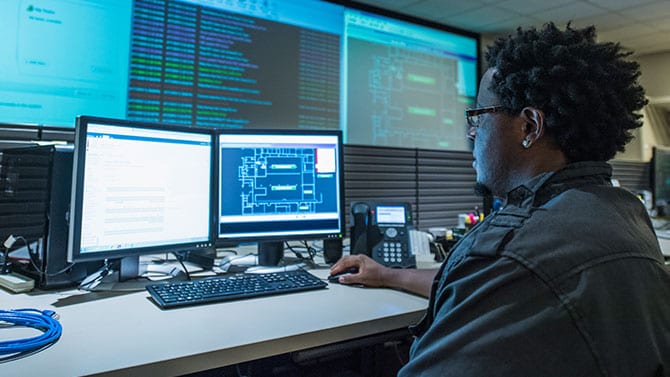
Ep2: The One on Low-Code and the rise of the Citizen Developer
What if you could create your own ChatGPT without coding? Thanks to low-code and no-code development platforms, this is possible. They enable people, who have little to no knowledge of coding or have no time for it, to create their own applications. And that’s how the citizen developer is born.
Together with Davy De Roeck, a Senior Technical Specialist in Business Applications and Low-Code at Microsoft Benelux, and Xavier Lisoir, Managing Director in Emerging Technology at PwC Luxembourg, we discuss the emergence and evolution of low-code, its capabilities and limitations, and the impact of emerging technologies like ChatGPT and Bing Chat.
Listen on: Apple Podcasts Spotify Deezer
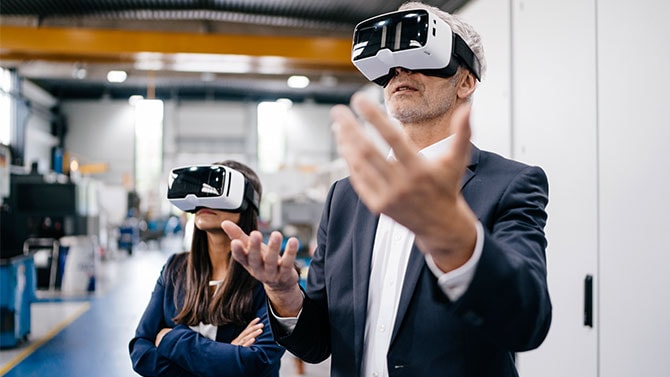
Ep1: The One on the Evolution of the IT role
In the first episode of TechTalk’s season on Tech Trends for 2024, we dive into the evolution of the IT organisation’s role, operating models and positioning towards the business, and the factors driving this transformation. Our guests Krzysztof Jaros-Kraszewski and Adam Tymofiejewicz, Technology Strategy Directors at PwC Luxembourg, share some best practices and trends as well.
Listen on: Apple Podcasts Spotify Deezer
Special Episode

The One on Fighting Financial Crime
In this special episode of TechTalk, we deep dive into fighting financial crime, its challenges, the financial risks in fintech, and the red flags to be aware of regarding legal and compliance matters.
To help us understand this complex matter, we welcome Pav Gill, a lawyer who is probably best known as the Wirecard’s whistleblower, and Michael Weis, Forensics and Anti-Financial Crime Leader at PwC Luxembourg.
Listen on: Apple Podcasts Spotify
Season 9

Ep 4: ICT Spring Special: The One on Tech for Sustainability with The Envisioners
In this episode of our ICT Spring Special season on Tech for Sustainability, we speak with Dave Coplin, Chief Envisioning Officer at The Envisioners, about what sustainability means to him, his views on how technology impacts the sustainable future of the world, what The Envisioners is doing to contribute to that future, and more.
Listen on: Apple Podcasts Spotify

Ep 3: ICT Spring Special: The One on Tech for Sustainability with Expon Capital
In this episode of our ICT Spring special season on Tech for Sustainability, we speak with Lily Wang, Partner at Expon Capital, about what sustainability means to her, her views on how technology impacts the sustainable future of the world, what Expon Capital is doing to contribute to that future, and more.
Listen on: Apple Podcasts Spotify

Ep 2: ICT Spring Special: The One on Tech for Sustainability with MetaBank
In this episode of our ICT Spring Special season on Tech for Sustainability, we speak with Hao Wang, Chief Operations Officer at MetaBank, about what sustainability means to him, his views on how technology impacts the sustainable future of the world, and what MetaBank is doing to contribute to that future, and more.
Listen on: Apple Podcasts Spotify

Ep 1: ICT Spring Special: The One on Tech for Sustainability with ArcelorMittal
We were at the ICT Spring 2023 to record a whole season of TechTalk about Tech for Sustainability. ICT Spring is one of the top tech conferences in Europe where business decision-makers, innovation managers, startups, researchers and venture capitalists get to network and exchange knowledge.
In this episode, we speak with Jean-Paul Lorrain, Head of environment, CO2 and CAPEX at Arcelor Mittal, about what sustainability means to him, his views on how technology impacts the sustainable future of the world, what Arcelor Mittal is doing to contribute to that future, and more.
Listen on: Apple Podcasts Spotify
Season 8
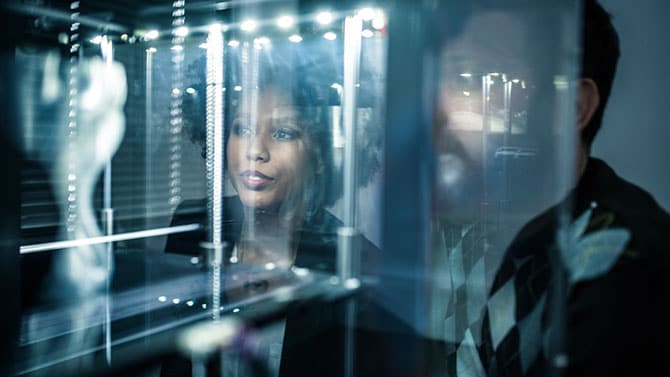
Ep 4: The One on Responsible AI
In the last episode of TechTalk’s Data & AI season, we deep dive into the potential ethical concerns and risks associated with the use of AI, including generative AI, and how organisations can use these tools responsibly. We also discuss the European Union AI Act, the first EU regulatory framework for AI proposed by the European Commission in April 2021.
We are joined by Saharnaz Dilmaghani, Senior Associate from the Data Analytics and AI team and an AI specialist, and Vojtech Volf, Manager and specialist in ICT Regulatory and Compliance, from PwC Luxembourg.
Listen on: Apple Podcasts Spotify

Ep 3: The One on the Data and AI Survey 2023
In this episode of TechTalk, we explore the results of the third edition of the “Use of Data Analytics and AI in Luxembourg” survey, with Andreas Braun, Director of Artificial Intelligence & Data Science at PwC Luxembourg.
He tells us how organisations in Luxembourg are considering AI technologies in their strategy, including generative AI, what AI tools they use and why, and how much they know about the European AI Act, among other things.
Listen on: Apple Podcasts Spotify

Ep 2: The One on Large Language Models
Are you familiar with the technologies that underpin Generative AI? They are called Large Language Models (LLMs) and can generate human-like text on a seemingly limitless number of matters in almost any language.
In this episode of TechTalk, Krishna Vadakattu, Responsible for the Artificial Intelligence and Machine Learning roadmap at Dataiku, explains what these models are, how they are developed, and how they work. He also shares some use cases for LLMs and how to use them in an enterprise context.
Listen on: Apple Podcasts Spotify

Ep 1: The One on Generative AI
Artificial Intelligence is a fascinating field that doesn’t cease to evolve and amaze us. That’s why we couldn’t shy away from having one season dedicated to it. And we start big with an episode on Generative AI.
For this episode, we invited Christoph Schommer, Professor of Artificial Intelligence at the University of Luxembourg, and Aida Nazari, Founder and Chief Operating Officer of LuxAI, to talk about how businesses can use it to innovate, the concerns around it, the upcoming new developments in the field, and much more.
Listen on: Apple Podcasts Spotify
Season 7

Ep 4: The One on Cloud Sustainability and Innovation with AWS
In this episode of TechTalk, the last of our Cloud Season, we welcome once more Quentin Bechoux, Cloud transformation Manager at PwC Luxembourg, but also Gaetan Claeys, who works as Public Sector Account Manager at Amazon Web Services in Belgium.
We talk about the AWS commitments on sustainability, the key aspects organisations should consider for their IT Cloud transformation project, the most common concerns and drivers when migrating to the Cloud, and more.
Listen on: Apple Podcasts Spotify

Ep 3: The One on Cloud Transformation from the User perspective
How does the user experience, whether that’s customers or employees, fit into the cloud transformation journey so many organisations are going through?
That’s the subject of this episode of TechTalk, the third of our Cloud season. Frantz Dorilas, Digital Transformation Senior Manager, and Quentin Bechoux, Cloud Transformation Manager at PwC Luxembourg, are our fantastic guests.

Ep 2: The One on Cloud Security
In this episode, we talk about cloud security with Quentin Bechoux, Cloud Transformation Manager, and Simon Petitjean, Cybersecurity Director, at PwC Luxembourg.
More precisely, we dive into the European Cybersecurity Certification Scheme for Cloud Services (EUCS), how to manage the security aspect of the cloud adoption journey, and how to ensure the security of data in the public cloud.

Ep 1: The One on Cloud Sovereignty & Governance
We are kicking off a new season of TechTalk - the one on Cloud. In our first episode, we talk with Xiaoyi Fang, Regulatory and Compliance Manager, and Quentin Bechoux, Cloud Transformation Manager, about Cloud sovereignty and governance.
They provide an overview of Cloud technologies today, and the relevant regulations that apply to it at EU level. We also discuss key challenges and opportunities of cloud adoption.
Season 6

End of the Year Special: The One on Trends for 2023
As the year draws to a close, we are taking a moment to reflect on it and to look ahead to 2023. In this “End of the Year” special episode, we talk about the major trends with Miquel Lladó, Professor of Strategic Management & Leadership, and advisor to CEOs and Executive Teams on Strategy Formulation & Implementation.

Ep2: The One on ICT Infrastructure design
In this episode of TechTalk, Alexandre Dulaunoy, Head of Department of CIRCL - Computer Information Response Center Luxembourg, tells us about the importance of ICT infrastructure design, how current practices are unintentionally helping attackers and what should be done instead.

Ep1: The One on Critical Infrastructure, an Introduction
We begin a new season of TechTalk with a series of episodes about Critical Infrastructure protection —a hot topic that should be on the minds of each one of us.
The regrettable events we are living through, particularly the war in Ukraine, as well as recent high-profile cyber-attacks on the energy industry, are putting critical infrastructure security in the spotlight.
To give us the details about this timely matter, we invited Simon Petitjean, Cybersecurity Director and Offensive Security & Red Team Leader, and Maxime Pallez, Cybersecurity Senior Manager, who focuses on security governance at PwC Luxembourg.
Season 5

Ep24: The One on Quizzing Patrice and Koen, our Tech Leaders
In the last episode of season 5 of TechTalk, we get to know Patrice Witz, Partner and Technology & Digital Leader, and Koen Maris, Partner and Cybersecurity Leader at PwC Luxembourg.
They share with us their career experiences and wisdom as well as their views on the current and future trends in technology.

Ep23: The One on Quizzing Thierry and Fred, our Tech Leaders
The end of season 5 of TechTalk is approaching, and this year we have two closing episodes to get to know our four Technology leaders.
More specifically, we quiz them about their career path as well as their views on the current and future trends in technology.
In this one, we chat with Thierry Kremser, Partner and Data and AI Leader, and Frédéric Chapelle, Partner, leading the business transformation programme at PwC Luxembourg.

Ep22: The One on the Power of Perspective: BXT
BXT stands for Business, Experience and Technology, and it’s all about the power of perspective. In this episode of TechTalk, Pierre-André Honnay, Senior Business Development Coach and Facilitator, and Annabelle Buffart, UX Manager and BXT Coach, PwC Luxembourg, walk us through the ins and outs of this methodology.

Ep21: The One on Data For Equality
In this episode of TechTalk, we speak with Maria Bravo, Inclusion and Diversity Officer, and Laura Delgado Pardo, Senior Associate in Data and Analytics, about Data4Equality, a solution that can help organisations achieve a more equal workplace. We also talk about the benefits of gender pay equality, the challenges that still remain and the role of tech in helping solve those challenges.

Ep20: The One on Technology for Sustainability
In this episode of TechTalk, we talk with Julien Melotte, Sustainability Partner, and Julien Jacqué, Senior Manager leading projects in ESG transformation, from PwC Luxembourg, about how technology can support a more strategic and holistic approach to long-term value creation and help companies have a wider positive impact on society.

Ep19: The One on unique insights of Alternative Data
Social media commentary, satellite imagery and other data is part of ‘alternative data’. With the availability of sophisticated machine-learning analytics tools, it’s gaining traction within a wide variety of industries.
In this episode of TechTalk, we speak with Benedikt Jonas, Digital Intelligence Lead, and Andreas Braun, AI Team Lead at PwC Luxembourg, about the pros and cons of using alternative data to help businesses make better decisions.

Ep18: The One on Building a UX Community
In this episode of TechTalk, Veronika Ondrikova, Senior UX Designer, and Yasmine Meziane, Senior Digital Communications Officer at PwC Luxembourg, tell us the story behind our vibrant UX Community, why and how they created it and why they consider it important for businesses to host thematic communities.

Ep17: The One on Enterprise Architecture
In this episode of TechTalk, we speak with Patrice Passé-Coutrin, Director in Technology Consulting and Cyrille Fradin, Senior Manager in Technology Consulting at PwC Luxembourg. We talk about how real world Enterprise Architecture can add value to organisations, while helping them to align strategy and execution, optimise operations and reduce risk.

Ep16: The One on Cloud Computing
In this episode, we welcome Armin Prljaca, TechTalk’s new co-host, and our guest Stéphane Zema, Technology Director at PwC Luxembourg. He tells us about the benefits and drawbacks of cloud computing and the challenges of its adoption as well as the latest trends in the industry.

Ep15: The One on Learning Experiences in the Digital era
People are embracing continuous professional learning more and more, especially via digital means. Because of its flexibility, this type of learning is an opportunity to develop talent and better understand and surmount today’s challenges and the ones of the future. It’s also one of the answers to the skills shortfalls companies are facing.
In this episode of TechTalk, we speak with Etienne Hirsch, head of PwC’s Academy, about learning experiences in the digital era, how they are evolving, and the role that technological developments are playing in it.

Ep14: The One on Women, Tech and Education
In this episode of TechTalk, and to mark International Women's Day, we welcome Rocio Lopez Perez, Tech Educator at the Luxembourg Tech School, who shares with us her experience as a woman working in tech and her views on the role of education in closing the gender gap.

Ep13: The One when the Office goes Paperless
In 1975, the prestigious American news magazine Business Week published The office of the future, one of the first to flirt with the idea of a paperless office. Today, with the latest digital technology developments, the paperless office is not only plausible but, arguably, desirable.
But, as we all know, every coin, at least the physical ones, has two faces. In this episode of TechTalk, we speak with Xavier Lisoir, Managing Director at PwC Luxembourg, about breaking free from paper dependency, its pros and cons, and the technology behind it.

Ep12: The One on the Data and AI Survey
Not so long ago, artificial Intelligence seemed like something that could only exist in a science fiction movie. However, that’s no longer the case! AI is already well integrated into our daily lives and that applies to the business world as well. That’s precisely what PwC Luxembourg’s 2021 Data Analytics and Artificial Intelligence Survey shows.
For this episode of TechTalk, we invited Thierry Kremser, Data and AI Leader, and Andreas Braun, AI team Lead at PwC Luxembourg, to tell us all about the survey and share with us some of the most striking findings.

Ep11: The One on Intrapreneurship and Innovation
In this episode of TechTalk, we speak about Intrapreneurship and Innovation with Zoha Ahmed, Innovation & Strategy Manager, and Iga Guillemin, Product Development Manager at PwC Luxembourg. We also discuss why organisations should encourage new ideas from their own people, and onboard startups in innovation projects.

Ep10: The One on Digital Personal Branding to support your career
In this episode of TechTalk, we revisit personal branding concepts and how they are linked to our evolution as professionals. Our guests are Virginie Laye, who has extensive experience in people’s upskilling and coaching, and Christopher Rossa, who is specialising in new tech for people.

Ep9: The One on how Technology has changed Christmas
This episode of TechTalk is a special Christmas edition! In this one, we talk with Sybil Pasquier and Andrew Whiteside, who are Digital Accelerators at PwC Luxembourg, about how technology has changed this festive time. They’ll share with us their personal experiences and maybe some Christmas stories too. Give it a listen!

Ep8: The One on Technology to Enhance the HR function
Could the HR function escape the Attila of the XXI century, namely, the digital horde? You know the answer! Digital tools that can ease tasks related to people management and, in turn, help to boost the digital transformation of organisations are already out there. They are called Human Resources information systems, or HRIS.
In this episode of TechTalk, we speak with Shanika Charles, Director at PwC Luxembourg, about HRIS, including their capabilities and how they are evolving, but also the challenges of implementing these tools within an organisation.

Ep7: The One on Business Design
The words 'design' and 'design thinking' have joined the list of the 'buzzwords' of the decade, being thrown around in summits, workshops, conferences and even in the office’s small break room. It’s to reckon, though, that not everyone using these terms fully understands what they stand for.
This TechTalk is a sort of 101 introductory episode to revisit and discern what design and design thinking are and, in addition, it gives us room to introduce business design and how important it is for the future of the consulting business. Our guest is Sherif Labib, Senior Business Designer at PwC Luxembourg.

Ep6: The One on Social Engineering
Have you ever got a phone call from someone posing as a representative from a legitimate entity asking you for your personal information, or worse, telling you that your bank account has been compromised and they need your credentials? This is just one example of Social Engineering tactics, but there is more.
In this episode of TechTalk, we speak with Christina Lekati, Social Engineering Trainer & Consultant at Cyber Risk, who tells us all about Social Engineering, including what are the most commonly used tactics and how we can spot them before it's too late.

Ep5: The One on Why CISOs, DPOs and CEOs should work closer
In this episode of TechTalk, we speak with Paul Oor, who is an independent Security and Data Protection Consultant and Project Manager, about the reason(s) why Chief Information Security Officers (CISOs), Data Protection Officers (DPOs) and Chief Executive Officers (CEOs) should work closer.

Ep4: The One on a Digital Identity for Europe
Will our physical identification documents, such as identity cards or passports, soon be a thing of the past in Europe? In this episode of TechTalk, we talk with Serge Hanssens about the opportunities and challenges for developing a viable and solid digital identity ecosystem in the Old Continent and how such a system would work in practice.

Ep3: The One on Ethical Hacking
Very often, we hear on the news about a cyber-attack, where malicious hackers worked to disable a security system to either take it down or to steal information, usually to get a ransom.
But hacking isn't only about illegal activities. In this episode of TechTalk, Luis and I talk with Simon Petitjean, Offensive Security & Red Team Leader at PwC Luxembourg, about "the good type of hacking" - the ethical one. And who’s better placed to tell us about it than an ethical hacker himself?

Ep2: The One on Process Mining, simply Explained
The term "Process Mining" was first coined in a research proposal written by the Dutch computer scientist Wil van der Aalst, known as the Godfather of Process mining. This is how this new field of research began, emerging under the umbrella of techniques related to data science and process science at the Eindhoven University in 1999.
In this episode of TechTalk, we invited Maxime Hennau, Advisory Senior Manager at PwC Luxembourg, to explain to us, in layman’s terms, what process mining is.

Ep1: The One on Digital Procurement
The procurement function is currently changing, like most if not all business functions and operations, due to digital technology. Organisations are looking for solutions to advance procurement, which, among others, translates into cost savings and risk mitigation, while improving the employee and user experience with new digital tools. However, when betting on this transformation, there are challenges to face too.
In this episode of TechTalk, we talk about the digitalisation of procurement with Yoliana Bayona, Advisory Services Director, and Frédéric Chapelle, Partner at PwC Luxembourg.
Contact us
Pauline André
Director, Head of Marketing & Communications, PwC Luxembourg
Tel: +352 49 48 48 3582


